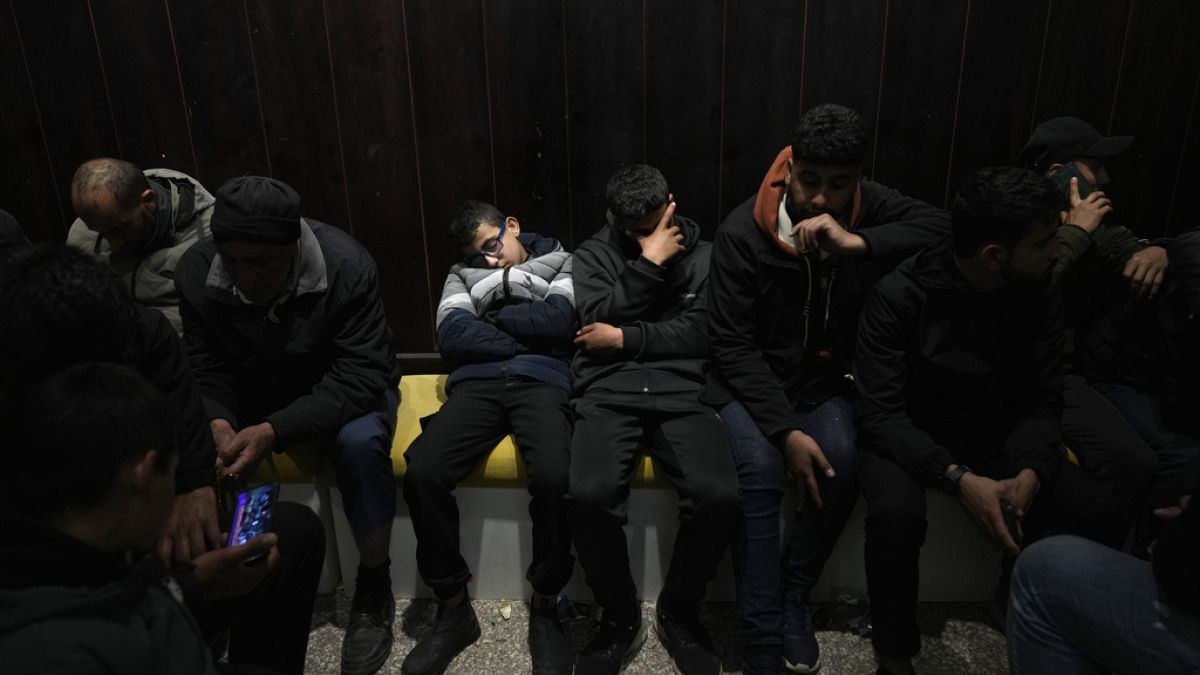‘A shot at the bow’: Trump puts trading partners on notice
For now, the financial markets are taking the president-elect’s tariff threats seriously, if not literally.
President-elect Donald Trump’s fresh tariff threats against Mexico, Canada and China signal a return of his favorite first-term negotiating tactic: hobbling other countries’ access to the U.S. economy.
And it sends a clear message to foreign leaders, businesses and policymakers that despite naming tariff skeptics like hedge fund manager Scott Bessent and financier Howard Lutnick to his Cabinet, Trump still plans to leverage American markets and foreign trade to try to force countries to give into his demands on everything from immigration to economic policy.
In a series of social media posts Monday night, Trump declared he will hit America’s top three trading partners with tariffs unless they stem the flow of illegal drugs and migrants, a page torn right from his first-term playbook. Despite roiling relations and causing turmoil in financial markets, Trump was able, with varying success, to address unfair trade, renegotiate existing trade deals and reach agreements on unrelated issues like migration during his first term. As he prepares to enter the White House for a second time, he’s already trying to lay the groundwork for declaring early victories on some of his top priorities.
“This is a shot at the bow,” said Stephen Moore, an economic adviser to Trump. “This is an example of how Trump uses tariffs and the threat of tariffs for strategic purposes.”
For those with something at stake, whether it be money or constituents, that could mean another whiplash-inducing period of uncertainty.
“Right now, I see everything that Trump’s doing on tariffs as a negotiating tool,” said Sen. Chuck Grassley (R-Iowa), who saw farmers in his home state negatively impacted by retaliation from Trump’s first trade war with China. “And we’ll have to wait and see how successful he is about that.”
For now, the financial markets are taking his comments seriously, if not literally. The dollar on Tuesday strengthened against both the Mexican peso and the Canadian dollar — a sign that currency traders took Trump’s saber-rattling seriously — but major stock indices posted modest gains or remained largely unchanged. That reaction seemed to be more a reflection of the enthusiasm for Trump’s overarching economic goals than a response to any specific policy, said Darrell Crate, the founder and managing principal at Easterly Asset Management.
“We’ve all come to know Donald Trump over the last almost decade now,” said Crate, a longtime GOP donor who was treasurer of Mitt Romney’s presidential campaign. “We’re right at the start of the tariff story.’
Eric Wallerstein, the chief markets strategist at Yardeni Research, said Wall Street’s tepid reaction to the Truth Social post suggests a belief that this is a negotiating tactic “so he can get an early win when he assumes office.”
“He’s not the president. We’re still a couple months out,” he added.
Trump’s threat of a 25 percent tariff drew a quick reaction from Mexican President Claudia Sheinbaum, who signaled Mexico would retaliate with its own tariffs “until we put at risk our shared enterprises” — a nod to massive investments U.S. auto companies have made in manufacturing facilities south of the border. Sheinbaum noted interdictions of illegal immigrants were down, citing data from the U.S. Customs and Border Protection. She also took the U.S. to task in a letter to Trump over its supposed trafficking of illegal firearms into Mexico.
But the Mexican president, who was just inaugurated in October, also recognized the need to “create a new labor mobility model” to address the root causes of migration and the need for collaboration to stop the flow of precursor chemicals to make drugs like fentanyl coming into North America from “Asian countries.”
Mexico has had practice at responding to Trump’s threats. Former Mexican President Andrés Manuel López Obrador’s at times had a warm relationship with Trump during his first term, a dynamic that eased certain dealmaking between the countries, despite Trump’s repeated insults toward Mexicans and promises to build a border wall to keep out migrants, criminals and drugs.
In Trump’s first year in office, he threatened to withdraw from the North American Free Trade Agreement unless Mexico and Canada agreed to renegotiate the nearly 25-year-old pact. The three countries struck a deal a year later, which Trump and his Mexican and Canadian counterparts signed in November 2018.
However, that agreement did not stop Trump from threatening to impose an escalating tariff on Mexico in 2019 to pressure that country to do more to stop the flow of migrants from Central American countries. Under Trump’s plan, the duty would start at 5 percent and increase every month until it reached 25 percent or a deal was reached.
Just days before the first duties were slated to go into effect, Trump announced he had reached a migration agreement, thus ending that threat.
Mexico said it would send 6,000 troops from its newly formed National Guard to the country’s southern border with Guatemala, while the State Department said it would expand its “remain in Mexico” program across the entire Southwest border. That program, which the Biden administration ended in 2022, required migrants seeking asylum to wait in Mexico until their U.S. immigration court date.
Canada has also honed its approach to Trump’s threats since his first term, launching the “Team Canada” charm offensive to neutralize bad blood after Trump’s surprise win destabilized Ottawa in 2016. In recent talks with Republicans in Washington, the Canadians have focused on a message that upending relations would spell disaster for the U.S. economy.
Canadian officials in recent weeks have also echoed Trump’s repeated concerns over Mexico’s role as a supposed back-door for Chinese imports. And Canadian Prime Minister Justin Trudeau suggested last week that Canada might be open to seeking a separate trade deal with the United States without Mexico.
Trudeau said he spoke to Trump by phone Monday night about his latest statements.
“It was a good call,” Trudeau said Tuesday on Parliament Hill. “We obviously talked about laying out the facts, talking about how the intense and effective connections between our two countries flow back and forth.”
Canada and Mexico account for nearly one-third of U.S. goods imports, which totaled about $3.1 trillion last year. U.S. tariffs would likely prompt retaliation from Canada and Mexico, driving up costs for things like automobiles and energy across North America.
Economists, more broadly, have warned that the universal tariffs he pledged to implement on the campaign trail could cause domestic prices to spike and economic growth to stall. Many on Wall Street have taken Trump’s selection of Bessent to lead Treasury and Lutnick for Commerce Secretary as a sign that the president-elect’s bark might be much worse than his bite when it comes to trade policy.
Bessent and Lutnick clashed after Election Day over who would get Trump’s nod to lead Treasury. But both have often struck more dovish stances on trade policy than other Trump economic advisers — most notably former U.S. Trade Representative Robert Lighthizer — when it comes to tariffs. Lutnick said in a pair of television appearances in September that the U.S. economy would benefit from “balanced tariffs” and has described Trump’s threat to impose universal tariffs as a “bargaining chip.”
In a recent Fox News op-ed, Bessent has defended the use of tariffs to achieve foreign policy goals — including to secure cooperation “on ending illegal immigration and interdicting fentanyl trafficking” — but he has also said that he would recommend that any new tariffs be “layered in gradually” to spread out their impact on prices. He told investors in his hedge fund Key Square Group in January that “the tariff gun will always be loaded and on the table but rarely discharged.”
Mickey Djuric and Meredith Lee Hill contributed to this report.
What's Your Reaction?



















































